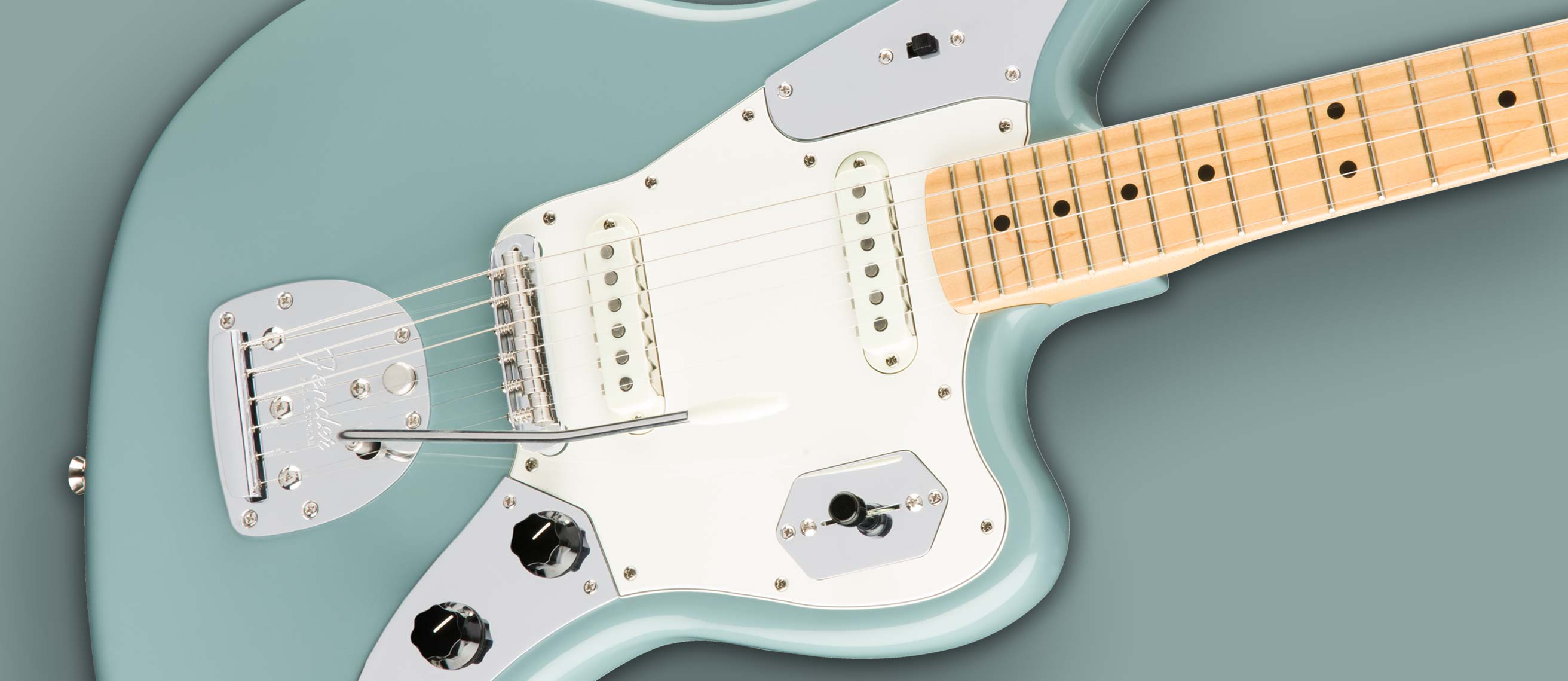
Introduced as a top-of-the-line instrument in 1962, the Jaguar rode the ebbing waves of surf music throughout that decade with its shapely offset body, distinctive jangle, short 24-inch scale length neck, genius floating tremolo system and chrome appointments.
But it did go out of production after a 13-year run before punk and indie players brought them back into vogue beginning in the late 1970s and beyond, finding Jaguars—and their full-scale Jazzmaster cousins more affordable when Stratocaster or Telecaster were out of reach.
So why did Jaguars essentially go out of style for that brief period? For one, the Tele and Strat ruled supreme at the time. For another, the British Invasion all but wiped out the popularity of surf music.
Additionally, some have pointed to the ambitious control system Jaguars employed. Yes, they were technologically advanced and offered more options, but they were also complex.
As such, what these controls need is a little explanation

Traditionally, the Jaguar has two circuits — lead and rhythm.
The lead circuit allows for the activation of both pickups with three slide switches on a chrome plate on the lower bout, while the rhythm circuit only deals with the neck/rhythm pickup through controls on the upper bout’s chrome plate. It should be noted, that when in the rhythm setting, the bridge pickup is deactivated and the lower-bout volume and tone controls go inactive.
The first slide switch on the lead circuit (nearest the bridge) engages a capacitor that is known as a mid-tone cut switch, or sometimes the “strangle” switch.
The middle is an on/off for the bridge pickup, and the third (closest to the edge of the body) is an on/off switch for the neck/lead pickup.
The lead circuit also has two pots, a master volume and a tone control.
The rhythm circuit on the upper horn consists of a single two-way slide switch that solely engages the bass-heavy neck pickup. There are also two wheels on the horn that alter the volume (nearest the slide switch) and tone, which is sometimes called a "treble roll-off".

A four-position selector switch on the lower bout and a phase toggle on the upper bout offers a slew of tone options.
When both pickups are activated, the phase switch changes the polarity of one of the pickups when flipped to the "on" position, resulting in a thinner sound great for funk or reggae. What’s more, a new treble-bleed circuit allows all your trebly tones to shine through at any volume.
From surf to punk to indie rock, the Jaguar has stood the test of time. Vintage or new, it remains one of Fender’s most versatile guitars, a factor that is due, in large part, to its innovative controls.
Still, there are even more versions of the Jaguar, such as the Player II Jaguar, that have simplified controls, making them even more accessible for even more fans of the offset legend.
In the Player Jaguar, the wiring scheme features single set of volume and tone controls and a Telecaster-style three-way selector switch. In addition, there is a switch on the upper bout, situated where the original Jaguar’s “rhythm circuit” once lived. This switch taps one humbucker coil for single-coil bridge tones.
In all, there is a Jaguar for everyone. And if you want to peruse the entire Jaguar family, you can find them here.
Don’t miss out!
Be the first to know about new products, featured content, exclusive offers and giveaways.


